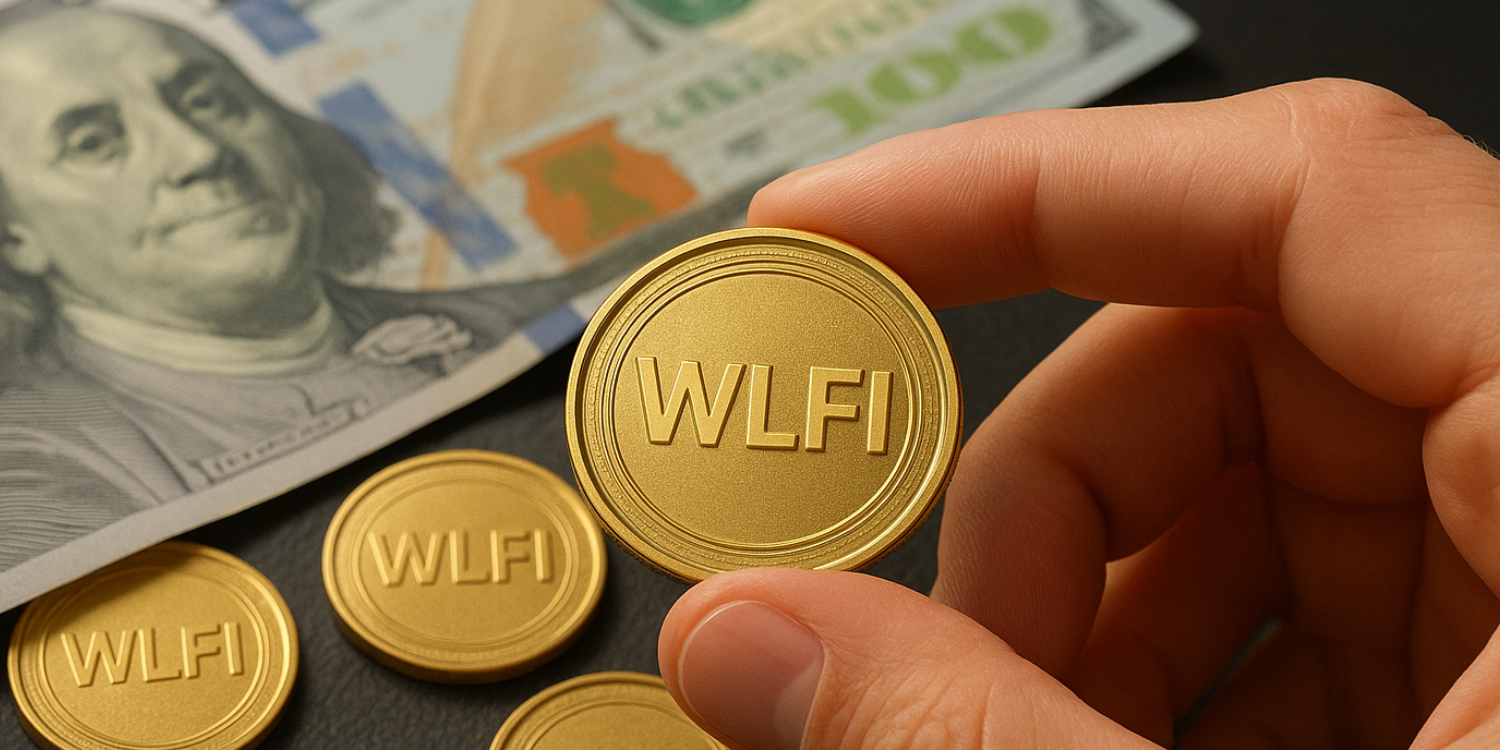In a move that has quickly captured attention across both the political and crypto worlds, World Liberty Financial (WLF) — a blockchain venture publicly associated with former U.S. President Donald Trump’s network — has announced an airdrop of 8.4 million WLFI governance tokens to participants of its USD1 stablecoin program.
The airdrop is designed to reward early supporters who took part in WLF’s “USD1 Points Program,” a campaign that encouraged users to trade and hold USD1, the company’s dollar-pegged stablecoin. This initiative runs across multiple global exchanges such as Gate.io, KuCoin, LBank, HTX Global, Flipster, and MEXC. Each exchange will manage its own rules and distribution schedule, creating a competitive yet inclusive rollout of the WLFI governance token.
The Strategy Behind the Airdrop
At its core, this campaign represents a carefully engineered strategy to stimulate adoption of USD1 and deepen engagement with the WLF ecosystem. By directly tying rewards to participation, WLF is attempting to create a self-sustaining loop: the more users trade or hold USD1, the more WLFI tokens they earn — and the more governance power they gain within the network.
This “adopt-and-earn” model mirrors successful tactics used in other major crypto ecosystems, where early incentives laid the foundation for long-term community loyalty. For WLF, it’s also an opportunity to build brand recognition and reinforce the idea that USD1 is not just another stablecoin but part of a larger digital-finance platform.
WLFI: The Governance Core
The WLFI token sits at the heart of the World Liberty ecosystem. It acts as a governance and utility token, giving holders the ability to influence decisions on protocol upgrades, reserve management, and ecosystem partnerships. The token also doubles as a loyalty reward, blurring the line between governance participation and user incentives.
By distributing WLFI through an airdrop rather than a traditional sale, WLF signals a desire to decentralize control early and align token ownership with actual platform activity. However, this approach is not without trade-offs. Airdrops often flood the market with new tokens, leading to potential short-term volatility and speculative trading. The challenge will be ensuring that WLFI’s long-term value is supported by real utility, not just distribution hype.
USD1: The Stablecoin with Ambition
USD1, WLF’s flagship product, has been promoted as a fully dollar-backed stablecoin, supported by reserves of U.S. dollars, Treasury bills, and equivalent assets. It’s being positioned to compete with giants like Tether’s USDT and Circle’s USDC — not only in trading volume but in perceived transparency and accessibility.
In recent months, USD1’s market capitalization has reportedly climbed toward the multi-billion-dollar range, showing significant traction among traders and exchanges. Its presence on multiple platforms and integration into DeFi protocols suggest that it’s being taken seriously as a new entrant in the stablecoin race.
WLF’s ultimate goal seems to go beyond mere parity with other stablecoins. By combining a politically charged brand, a governance token (WLFI), and a reward-based ecosystem, the firm is aiming to create a distinct identity — one that merges finance, technology, and populist narrative.
Market Reactions and Implications
The airdrop announcement has generated a wave of activity in both WLFI and USD1 trading pairs. On major exchanges, WLFI’s trading volumes spiked sharply as speculators positioned themselves for the airdrop event. Some analysts view this as a sign of strong retail curiosity, while others caution that it could represent short-term speculative behavior rather than organic growth.
From a broader perspective, this move fits into a larger pattern of “governance-driven ecosystems” that seek to distribute ownership early. It’s also part of a trend toward stablecoin diversification, where new entrants challenge the duopoly of USDT and USDC by offering alternative reserve models and community-based rewards.
However, investors are keeping an eye on a few key uncertainties:
- Dilution risk: With millions of tokens entering circulation, WLFI’s price could experience near-term pressure unless new demand offsets the increased supply.
- Execution complexity: Managing airdrops across six exchanges introduces logistical and communication risks. Any delay or inconsistency could lead to frustration among participants.
- Regulatory oversight: Given the political associations of the project, scrutiny from regulators may be higher than usual, particularly regarding reserve audits, KYC/AML compliance, and token issuance practices.
The Bigger Picture: Branding Meets Blockchain
World Liberty Financial’s story sits at the intersection of politics, branding, and decentralized finance. The company has marketed itself not merely as a fintech startup but as a symbol of economic freedom and “America-first” values in the digital age. This narrative, combined with Trump’s indirect association, has made the token ecosystem a magnet for attention — both supportive and critical.
For the crypto market, this development adds another dimension to how stablecoins evolve. While traditional players have focused on transparency and institutional trust, WLF is leveraging identity and community — using ideological appeal as a differentiator. Whether that becomes a sustainable strategy or a temporary headline grab depends on execution and ongoing credibility.
Outlook: What Comes Next
The next few weeks will reveal how effectively WLF can translate this surge of attention into sustainable traction. Analysts will be watching metrics like:
- Growth in the number of active USD1 wallets
- WLFI trading volume and price stability
- Distribution fairness and user satisfaction after the airdrop
- Clarity around reserve audits and legal compliance
If WLF can demonstrate genuine backing for USD1 and transparent governance for WLFI, it may evolve into a credible contender in the stablecoin market. On the other hand, if speculation dominates or transparency lags, the ecosystem risks being labeled as another short-term hype cycle.
For now, the WLFI airdrop represents one of the most talked-about token distribution events of the year — combining financial innovation, political theater, and market experimentation in equal measure. Whether it ultimately reshapes the stablecoin landscape or fades into noise will depend on how the project manages its next act.











